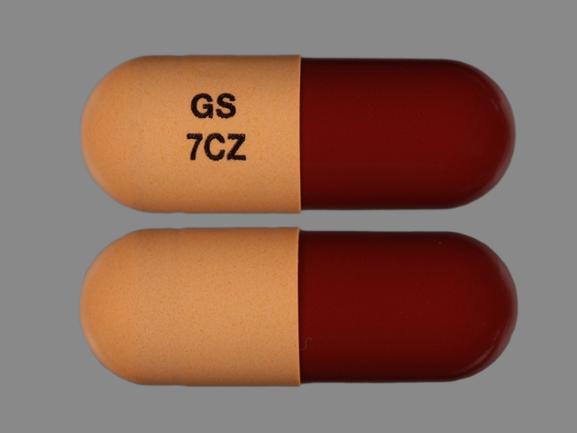Jalyn Side Effects
Generic name: dutasteride / tamsulosin
Medically reviewed by Drugs.com. Last updated on Sep 20, 2023.
Note: This document contains side effect information about dutasteride / tamsulosin. Some dosage forms listed on this page may not apply to the brand name Jalyn.
Applies to dutasteride / tamsulosin: oral capsule.
Serious side effects of Jalyn
Along with its needed effects, dutasteride/tamsulosin may cause some unwanted effects. Although not all of these side effects may occur, if they do occur they may need medical attention.
Check with your doctor immediately if any of the following side effects occur while taking dutasteride / tamsulosin:
More common
- Chills
- cold sweats
- confusion
- dizziness, faintness, or lightheadedness when getting up suddenly from a lying or sitting position
Less common
- Chest pain
- cough or hoarseness
- fever
- lower back or side pain
- painful or difficult urination
Incidence not known
- Blistering, flaking, or peeling of the skin
- blurred vision
- difficulty with breathing
- fast, irregular, pounding, or racing heartbeat or pulse
- large, hive-like swelling on the face, eyelids, lips, tongue, throat, hands, legs, feet, or sex organs
- pain or swelling of the treated skin
- painful or prolonged erection of the penis
- sweating
- trouble breathing
- unusual tiredness or weakness
Other side effects of Jalyn
Some side effects of dutasteride / tamsulosin may occur that usually do not need medical attention. These side effects may go away during treatment as your body adjusts to the medicine. Also, your health care professional may be able to tell you about ways to prevent or reduce some of these side effects.
Check with your health care professional if any of the following side effects continue or are bothersome or if you have any questions about them:
More common
- Change or problem with discharge of semen
- decreased interest in sexual intercourse
- dizziness
- enlarged and painful breasts
- inability to have or keep an erection
- loss in sexual ability, desire, drive, or performance
Less common
- Back pain
- body aches or pain
- congestion
- diarrhea
- dryness or soreness of the throat
- headache
- increased cough
- lack or loss of strength
- pain or tenderness around the eyes and cheekbones
- runny nose
- sleepiness or unusual drowsiness
- sleeplessness
- sneezing
- stuffy nose
- tender, swollen glands in the neck
- tightness of the chest
- trouble sleeping
- trouble with swallowing
- unable to sleep
- voice changes
Incidence not known
- Bloody nose
- constipation
- hives or welts, itching, skin rash
- joint or muscle pain
- red irritated eyes
- red skin lesion, often with a purple center
- redness of the skin
- sore throat
- sores, ulcers, or white spots in the mouth or on the lips
- vomiting
For Healthcare Professionals
Applies to dutasteride / tamsulosin: oral capsule.
General
The most common adverse reactions were ejaculation disorders, impotence, decreased libido, breast disorders, and dizziness.[Ref]
Genitourinary
Very common (10% or more): Ejaculation disorders (up to 11%)
Common (1% to 10%): Impotence
Dutasteride:
Common (1% to 10%): Ejaculation disorders, impotence
Postmarketing reports: Testicular pain, testicular swelling
Tamsulosin:
Common (1% to 10%): Ejaculation disorders, impotence
Postmarketing reports: Priapism[Ref]
Psychiatric
Common (1% to 10%): Libido decreased
Dutasteride:
Common (1% to 10%): Libido decreased
Postmarketing reports: Depressed mood
Tamsulosin:
Common (1% to 10%): Libido decreased, insomnia[Ref]
Other
Common (1% to 10%): Breast disorders
Dutasteride:
Common (1% to 10%): Breast disorders
Postmarketing reports: Localized edema
Tamsulosin:
Common (1% to 10%): Asthenia, chest pain
Uncommon (0.1% to 1%): Breast disorders[Ref]
Nervous system
Common (1% to 10%): Dizziness
Dutasteride:
Uncommon (0.1% to 1%): Dizziness
Tamsulosin:
Common (1% to 10%): Somnolence
Uncommon (0.1% to 1%): Dizziness[Ref]
Cardiovascular
Uncommon (0.1% to 1%): Cardiac failure
Dutasteride:
Uncommon (0.1% to 1%): Cardiac failure
Tamsulosin:
Very common (10% or more): Orthostatic hypotension (up to 16%)
Uncommon (0.1% to 1%): Cardiac failure
Postmarketing reports: Palpitations, atrial fibrillation, arrhythmia, tachycardia, hypotension[Ref]
Immunologic
Dutasteride:
Postmarketing reports: Hypersensitivity reactions
Tamsulosin:
Common (1% to 10%): Infection
Postmarketing reports: Hypersensitivity reactions[Ref]
Oncologic
Dutasteride:
Common (1% to 10%): Gleason score 8 to 10 prostate cancer
Frequency not reported: Male breast cancer[Ref]
Respiratory
Tamsulosin:
Common (1% to 10%): Rhinitis, pharyngitis, cough increased, sinusitis
Postmarketing reports: Respiratory problems, dyspnea, epistaxis[Ref]
Gastrointestinal
Tamsulosin:
Common (1% to 10%): Diarrhea
Postmarketing reports: Constipation, vomiting, dry mouth[Ref]
Musculoskeletal
Tamsulosin:
Common (1% to 10%): Back pain[Ref]
Dermatologic
Dutasteride:
Postmarketing reports: Rash, pruritus, urticaria, serious skin reactions, angioedema
Tamsulosin:
Postmarketing reports: Rash, urticaria, pruritus, angioedema, skin desquamation, Stevens-Johnson syndrome, erythema multiforme, dermatitis exfoliative[Ref]
Ocular
Tamsulosin:
Postmarketing reports: Blurred vision, visual impairment[Ref]
More about Jalyn (dutasteride / tamsulosin)
- Check interactions
- Compare alternatives
- Pricing & coupons
- Reviews (20)
- Drug images
- Side effects
- Dosage information
- During pregnancy
- Generic availability
- FDA approval history
- Drug class: 5-alpha-reductase inhibitors
- En español
Patient resources
Professional resources
Related treatment guides
References
1. Product Information. Jalyn (dutasteride-tamsulosin). GlaxoSmithKline. 2010.
Further information
Always consult your healthcare provider to ensure the information displayed on this page applies to your personal circumstances.
Some side effects may not be reported. You may report them to the FDA.

